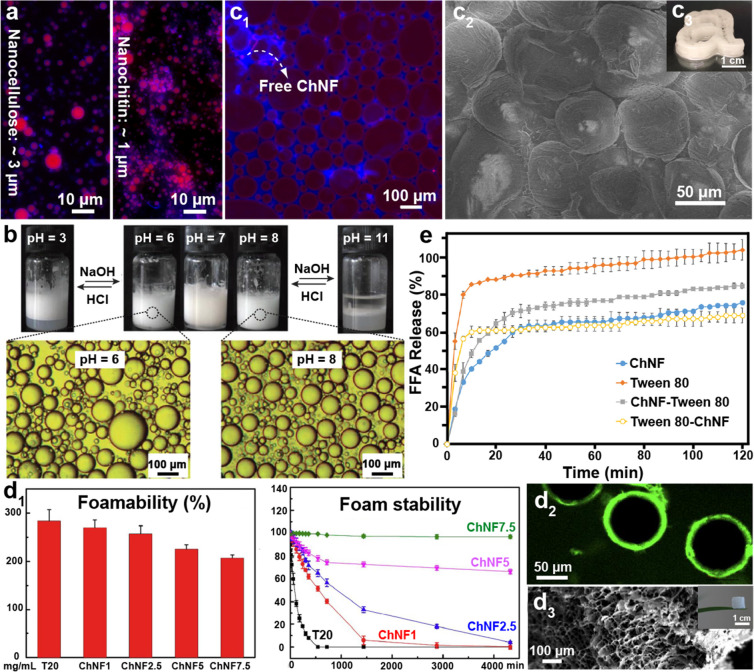Figure 29.
(a) Fluorescent microscopy images of Pickering emulsions stabilized by CNC and ChNF. Adapted with permission from ref (376). Copyright 2018 The Royal Society of Chemistry. Adapted from ref (273). Copyright 2019 American Chemical Society. (b) Visual appearance and optical microscopy images of pH-reversible, paraffin-in-water Pickering emulsions prepared at different pH using zwitterionic ChNF. Adapted with permission from ref (280). Copyright 2017 The Royal Society of Chemistry. (c1) Fluorescent microscopy images of HIPPE solely stabilized by ChNF. (c2) Cryo-SEM image of the HIPPE droplets (emulsions of 88% oil fraction) showing the distribution of ChNFs on the droplet surface and in the continuous phase. (c3) 3D-printed object produced from HIPPEs. In (a) and (c1), the nanopolysaccharides are stained blue and the oil phase is dyed red. Adapted from ref (410). Copyright 2020 American Chemical Society. (d1) Foamability (upper panel) and foam stability (bottom panel) of liquid foams stabilized by a mixture of a nonionic surfactant (Tween 20, T20) and ChNF at different concentrations (mg/mL). The T20 concentration was 0.5 wt % in all the samples. (d2) Confocal image of the liquid foam stabilized by FITC-labeled ChNF (7.5 mg/mL). (d3) SEM image of the cross section of ChNF-stabilized foam upon drying. The inset shows a photograph of a piece of solid foam on the leaf of a bracket plant. Adapted from ref (426). Copyright 2018 American Chemical Society. (e) Reduced free fatty acid (FFA) release of ChNF-stabilized Pickering emulsion under simulated small intestinal conditions. The emulsions named as “ChNF-Tween 80” or “Tween 80-ChNF” refer to the main droplet stabilizer, either ChNF or the nonionic surfactant (Tween 80), respectively. Adapted with permission from ref (498). Copyright 2020 Elsevier.

